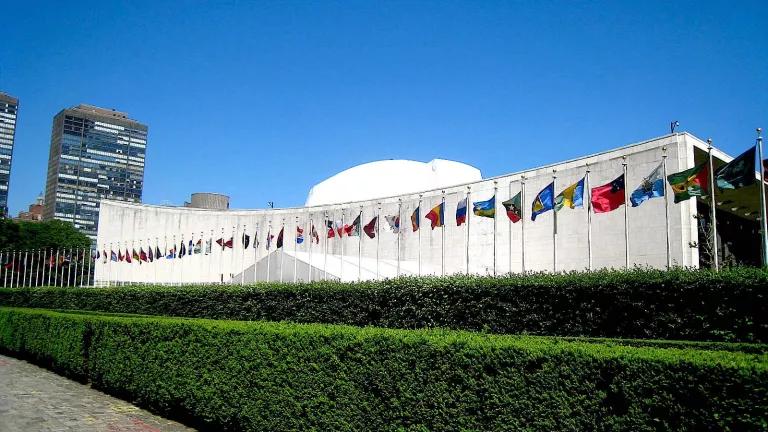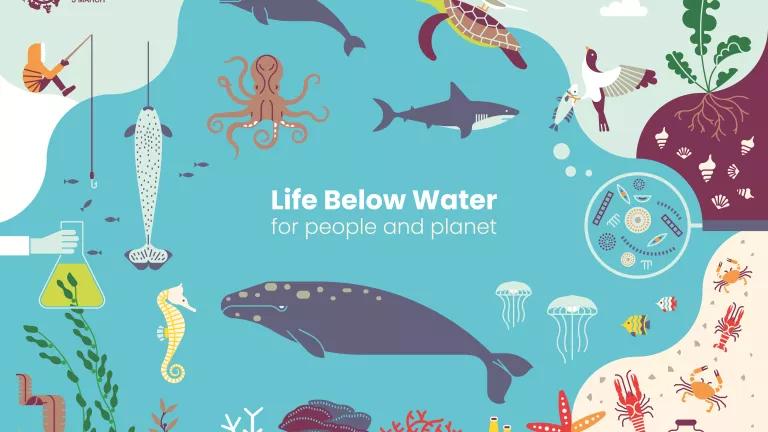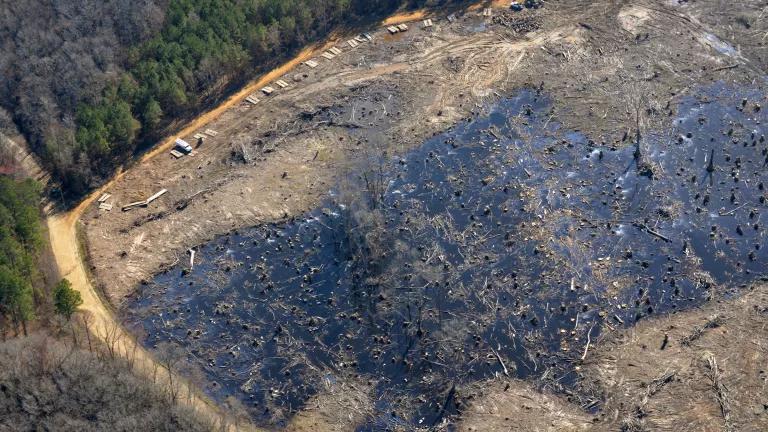For a High Seas Treaty, We Need High Ambition
As governments at the UN conclude the third high seas treaty negotiating session, Greta Thunberg and all ocean and climate activists remind us why we need to keep ambition high for a strong treaty.

Lisa Speer of NRDC addresses the conference on environmental impact assessments.
The vast expanse of the Atlantic that climate activist Greta Thunberg just sailed across en route to New York includes a large swath of ocean outside of any one country’s national jurisdiction. That area, the high seas, makes up two-thirds of the world’s ocean and nearly half the planet.
As I’ve previously written, the high seas contain enormous amounts of increasingly declining biodiversity, are under a number of threats including overexploitation, pollution, climate change and ocean acidification, and suffer from huge regulatory gaps.
Recognizing inadequacies in high seas management, governments at the United Nations (UN) in 2018 began negotiating a treaty on the conservation and sustainable use of biodiversity in areas beyond national jurisdiction. During the first two treaty negotiating sessions, governments expressed preferences on how to address key issues in the final agreement, including questions on establishing marine protected areas in the high seas—needed to safeguard ocean life from industrial activity—as well as standards on the conduct of environmental impact assessments on potentially environmentally harmful activities.
After all options were put on the table, the president of the negotiations, Ambassador Rena Lee of Singapore, synthesized them into draft treaty text to serve as the basis for this third negotiating session, which concludes today. While it contains a lot of bracketed—i.e. yet to be agreed upon—text, negotiating from draft text represents a huge step forward toward a final treaty, a sentiment reflected nearly unanimously in governments’ opening statements on the first day of this negotiation session last week.
Over the past two weeks, governments, intergovernmental organizations, and nongovernment organizations like NRDC have worked extremely hard to identify areas of convergence and reach agreement on key components of the treaty. Still, there is an enormous amount of work that still needs to be done before governments finalize a treaty that adequately safeguards the high seas.
Ahead of the fourth and final negotiating session, to be held during the first half of 2020, we need to keep sight of why we’re here in the first place. Greta Thunberg, who is leading a climate strike outside of the UN today, is a good reminder: she is calling on governments to raise their ambition and set strong emissions limits to leave her generation with a habitable planet. Her primary message is about climate change, but that threat also affects the ocean, and protecting the ocean and mitigating climate change are both activities that require ambitious commitments from governments.
To stem the tide of threats facing the ocean and to safeguard marine life, we need to highly or fully protect at least 30 percent of the ocean, which is not possible under our current legal regime. Governments at the UN need to finalize a strong high seas treaty by the end of 2020 and begin implementing it immediately after. The high seas, and all life that depend on them, are counting on it.

Actor Javier Bardem urges delegates at the UN to raise their ambition and negotiate a strong high seas treaty.




